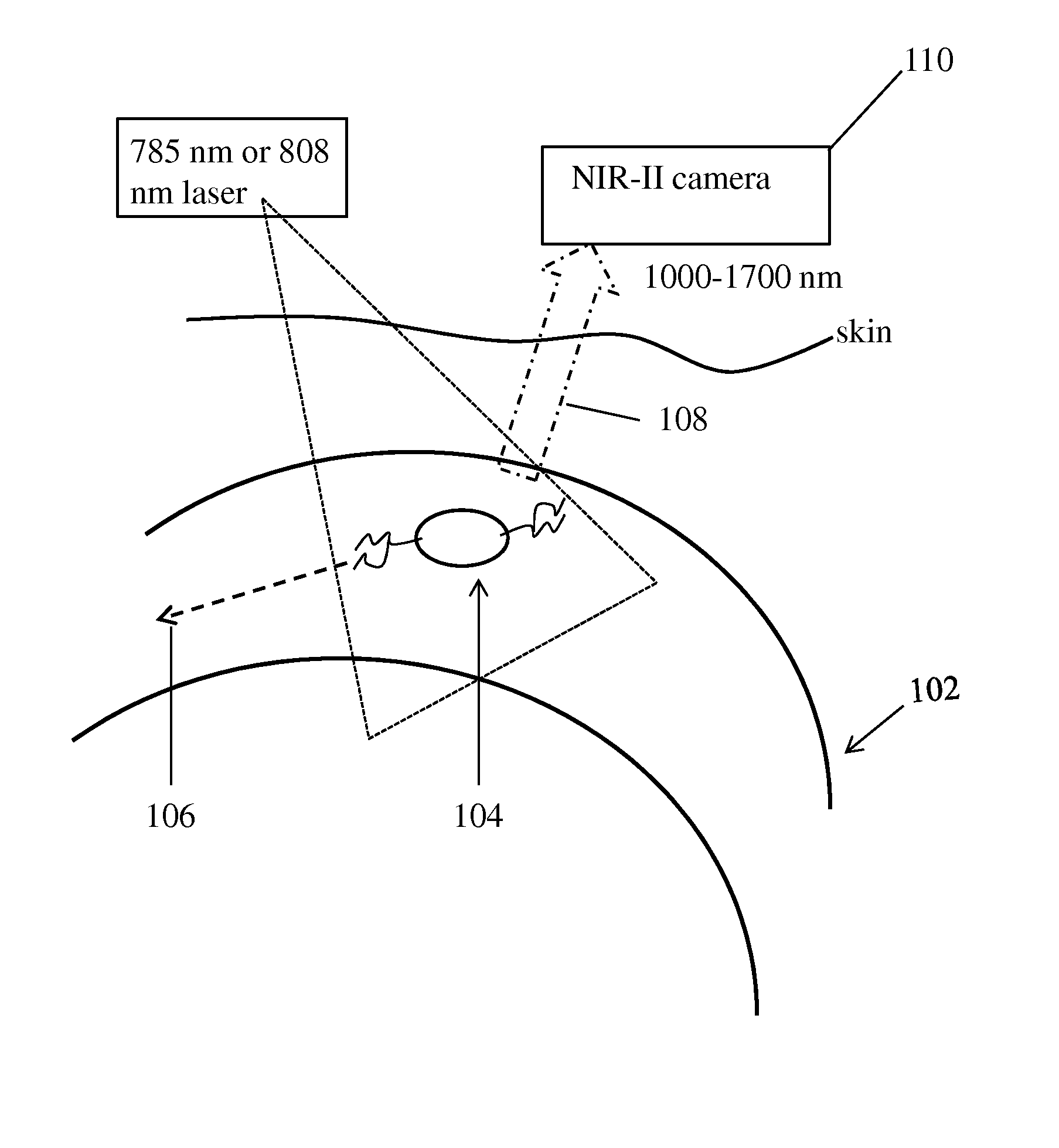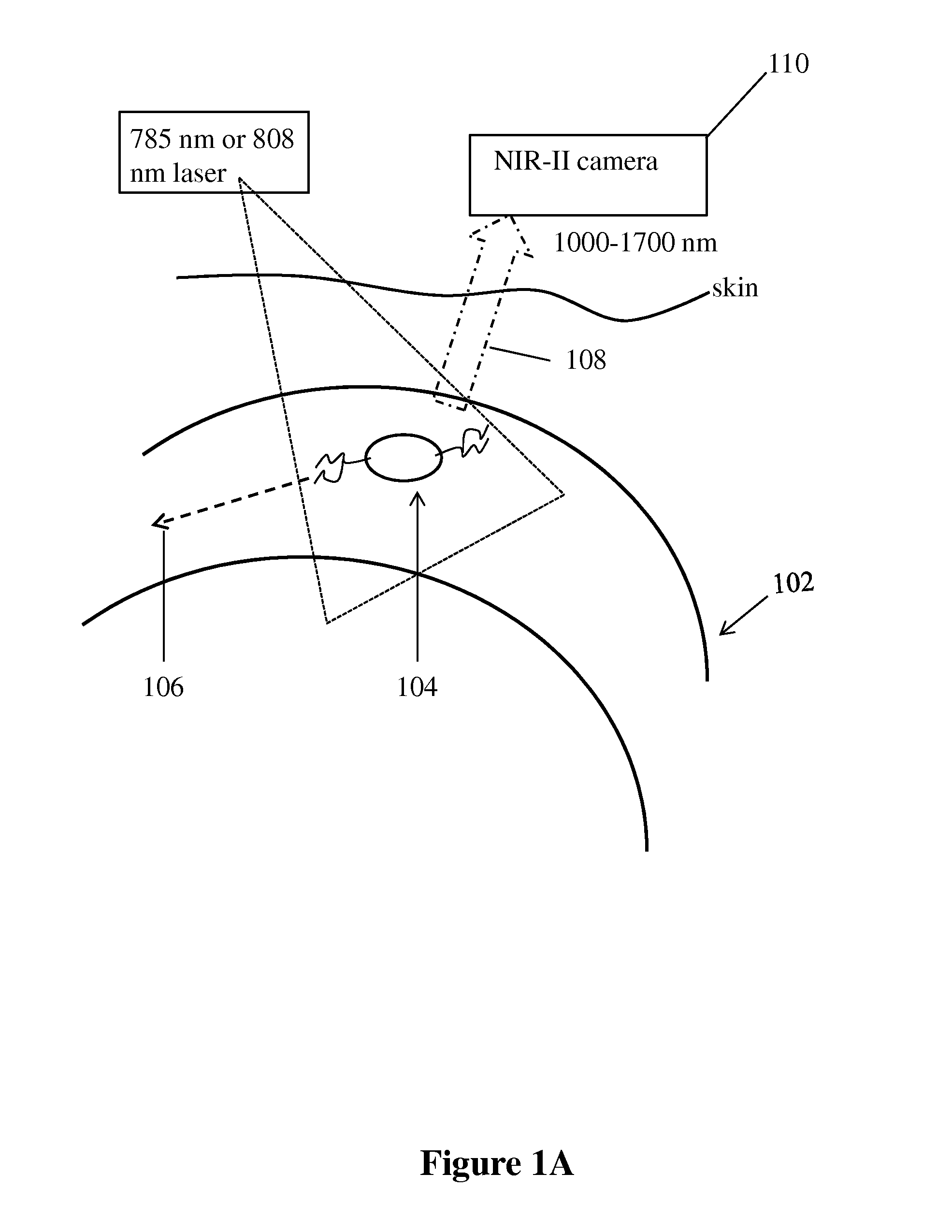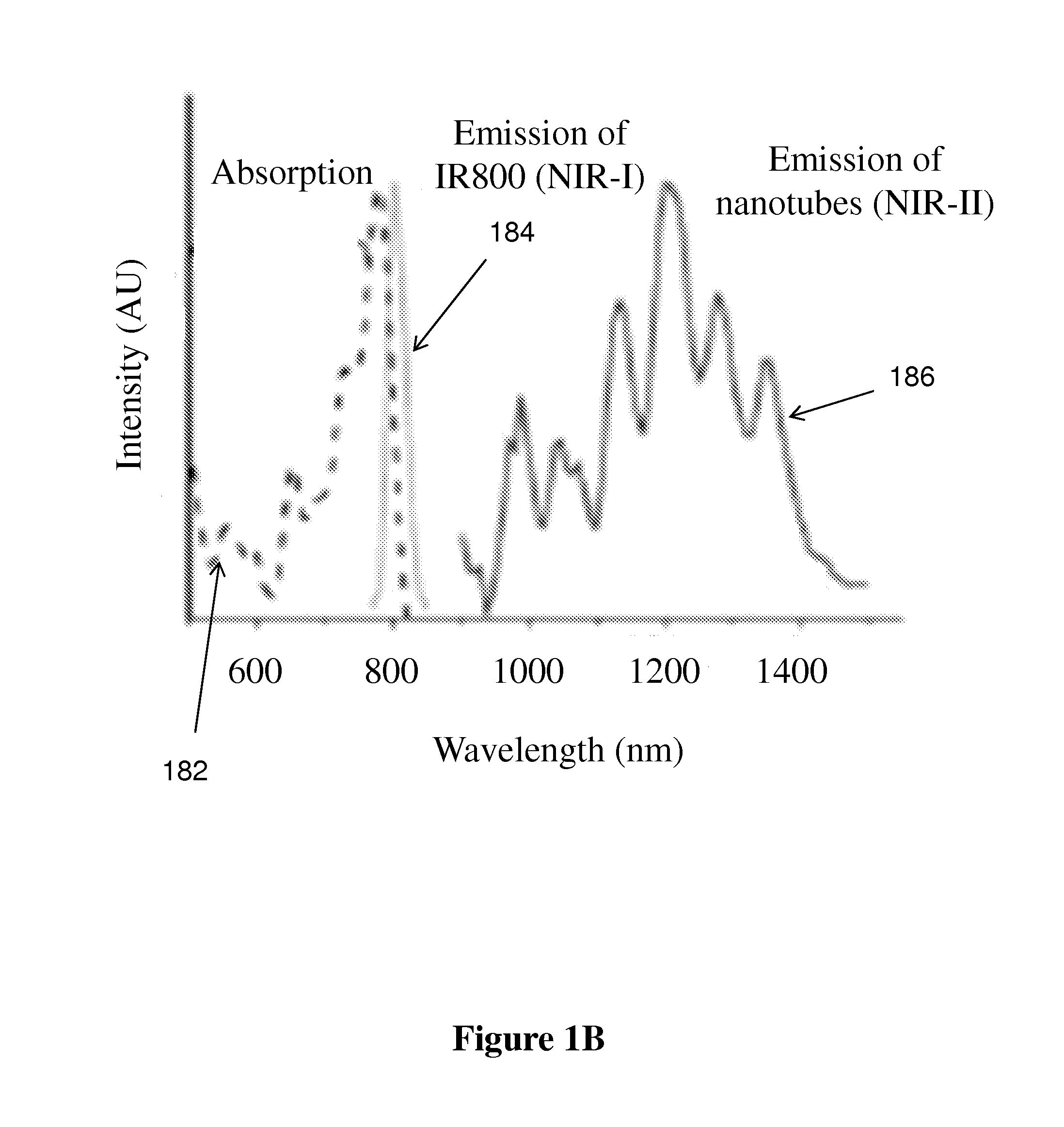High resolution imaging using near-infrared-ii fluorescence
a fluorescence and high-resolution technology, applied in the field of in vivo fluorescence-based optical imaging, can solve the problems of limited choice of nir-ii fluorophores, low fluorescence quantum yield, and no single modality provides adequate spatial and temporal resolution
- Summary
- Abstract
- Description
- Claims
- Application Information
AI Technical Summary
Benefits of technology
Problems solved by technology
Method used
Image
Examples
examples 1-4
[0061]Described in these examples is the use of biocompatible, brightly fluorescent SWNTs as NIR-II imaging agents. They are shown to be suitable for imaging vascular structures down to ˜30 μm in mouse hindlimb using an epifluorescence imaging method with an indium-gallium-arsenide (InGaAs) imaging system. Compared to micro-CT, NIR-II fluorescence imaging attains a ˜3-fold improvement in spatial resolution. Further, NIR-II imaging allows for differentiation of arteries from veins through principal component analysis (PCA) to obtain dynamic contrast-enhanced imaging. This method can also quantify femoral artery blood flows in both normal and ischemic hindlimbs, and reveal the degree of occlusion due to ischemia. Thus, a single NIR-II imaging modality enables multi-functional imaging capable of accomplishing what is typically done by several traditional techniques including micro-CT, ultrasonography and MRI, making it a unique method that incorporates many desirable features such as h...
examples 5-9
[0066]These examples describe the use of a new NIR-II fluorophore, silver sulfide (Ag2S) QDs for imaging xenograft tumors and vascular structures with high fluorescence quantum yield (15.5%) of NIR-II emission at ˜1200 nm. The present QDs are free of heavy metals of Cd, Hg or Pb, and can be used to detect small tumors down to ·0.1 mm3 and distinguish arterial and venous hindlimb vessels with ˜2 mm depth of penetration
Definitions
[0067]Unless defined otherwise, all technical and scientific terms used herein have the same meaning as commonly understood by those of ordinary skill in the art to which this invention belongs. Although methods and materials similar or equivalent to those described herein can be used in the practice or testing of the present invention, the preferred methods and materials are described. Generally, nomenclatures utilized in connection with, and techniques of, cell and molecular biology and chemistry are those well known and commonly used in the art. Certain ex...
example 1
NIR-I and NIR-II Fluorescence Imaging of Vasculatures
[0107]First, to glean the differences of in vivo NIR-I and NIR-II fluorescence imaging, we made biocompatible SWNT-IRDye-800 conjugates as dual-color imaging agents, where IRDye-800 (IRDye 800CW, LI-COR) was a commercial NIR-I fluorophore. High-pressure carbon monoxide conversion (HiPCO) SWNTs were stably suspended by biocompatible surfactants of 75% DSPE-mPEG (5kDa) and 25% DSPE-PEG(5kDa)-NH2 with amine groups covalently functionalized with IRDye-800 (FIGS. 1A and 5A-C). Both the SWNT and IRDye-800 label could be excited by a 785 nm laser, but exhibited different emissions. The IRDye-800 dye emitted at ˜800 nm in the NIR-I, while the SWNT emitted in the 1.1-1.4 m NIR-II region (FIG. 1B). The dual-color emission of SWNT-IRDye-800 conjugate ensured co-localization of SWNTs and IRDye-800 dyes, and enabled us to image the same tissue in two distinct spectral windows so as to evaluate the performance of photons in different wavelength...
PUM
 Login to View More
Login to View More Abstract
Description
Claims
Application Information
 Login to View More
Login to View More - R&D
- Intellectual Property
- Life Sciences
- Materials
- Tech Scout
- Unparalleled Data Quality
- Higher Quality Content
- 60% Fewer Hallucinations
Browse by: Latest US Patents, China's latest patents, Technical Efficacy Thesaurus, Application Domain, Technology Topic, Popular Technical Reports.
© 2025 PatSnap. All rights reserved.Legal|Privacy policy|Modern Slavery Act Transparency Statement|Sitemap|About US| Contact US: help@patsnap.com



